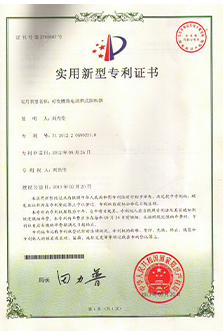 Afrikaans
Afrikaans  Albanian
Albanian  Amharic
Amharic  Arabic
Arabic  Armenian
Armenian  Azerbaijani
Azerbaijani  Basque
Basque  Belarusian
Belarusian  Bengali
Bengali  Bosnian
Bosnian  Bulgarian
Bulgarian  Catalan
Catalan  Cebuano
Cebuano  Corsican
Corsican  Croatian
Croatian  Czech
Czech  Danish
Danish  Dutch
Dutch  English
English  Esperanto
Esperanto  Estonian
Estonian  Finnish
Finnish  French
French  Frisian
Frisian  Galician
Galician  Georgian
Georgian  German
German  Greek
Greek  Gujarati
Gujarati  Haitian Creole
Haitian Creole  hausa
hausa  hawaiian
hawaiian  Hebrew
Hebrew  Hindi
Hindi  Miao
Miao  Hungarian
Hungarian  Icelandic
Icelandic  igbo
igbo  Indonesian
Indonesian  irish
irish  Italian
Italian  Japanese
Japanese  Javanese
Javanese  Kannada
Kannada  kazakh
kazakh  Khmer
Khmer  Rwandese
Rwandese  Korean
Korean  Kurdish
Kurdish  Kyrgyz
Kyrgyz  Lao
Lao  Latin
Latin  Latvian
Latvian  Lithuanian
Lithuanian  Luxembourgish
Luxembourgish  Macedonian
Macedonian  Malgashi
Malgashi  Malay
Malay  Malayalam
Malayalam  Maltese
Maltese  Maori
Maori  Marathi
Marathi  Mongolian
Mongolian  Myanmar
Myanmar  Nepali
Nepali  Norwegian
Norwegian  Norwegian
Norwegian  Occitan
Occitan  Pashto
Pashto  Persian
Persian  Polish
Polish  Portuguese
Portuguese  Punjabi
Punjabi  Romanian
Romanian  Russian
Russian  Samoan
Samoan  Scottish Gaelic
Scottish Gaelic  Serbian
Serbian  Sesotho
Sesotho  Shona
Shona  Sindhi
Sindhi  Sinhala
Sinhala  Slovak
Slovak  Slovenian
Slovenian  Somali
Somali  Spanish
Spanish  Sundanese
Sundanese  Swahili
Swahili  Swedish
Swedish  Tagalog
Tagalog  Tajik
Tajik  Tamil
Tamil  Tatar
Tatar  Telugu
Telugu  Thai
Thai  Turkish
Turkish  Turkmen
Turkmen  Ukrainian
Ukrainian  Urdu
Urdu  Uighur
Uighur  Uzbek
Uzbek  Vietnamese
Vietnamese  Welsh
Welsh  Bantu
Bantu  Yiddish
Yiddish  Yoruba
Yoruba  Zulu
Zulu Improving Efficiency of Bed Conveyor Systems Through Impact Analysis Techniques
The Impact of Bed Conveyors on Industrial Efficiency
In the fast-paced world of industrial manufacturing and logistics, efficiency has become the cornerstone of success. One of the key technologies that have emerged as a game-changer in enhancing productivity is the bed conveyor system. Bed conveyors, also known as flat bed conveyors, play a crucial role in various industries, facilitating the smooth and efficient transportation of goods. This article explores the impact of bed conveyors on industrial efficiency, focusing on their design, functionality, and benefits.
Understanding Bed Conveyors
Bed conveyors are mechanical devices used to transport materials from one location to another within a facility. They consist of a flat surface, or ‘bed,’ which can be equipped with different types of belts or surfaces tailored to the application. Bed conveyors can be found in manufacturing plants, warehouses, and distribution centers, serving as an integral component of material handling systems.
Enhancing Operational Efficiency
One of the primary impacts of bed conveyors on industrial efficiency is their ability to streamline operations. Traditional methods of material handling often involve manual labor, which can be slow and prone to errors. Bed conveyors automate the process, allowing goods to be moved continuously and smoothly from one point to another. This automation reduces the time taken for transportation, minimizes the likelihood of damage to products, and enhances overall workflow.
Moreover, the predictable and consistent transport provided by bed conveyors contributes to a more organized working environment. When materials are moved systematically, it results in better inventory management and a decrease in bottlenecks. This organization is critical in maintaining a steady flow of production, ultimately leading to higher output and improved turnaround times.
Versatility and Flexibility
Bed conveyors are designed to be versatile and flexible, accommodating various sizes, weights, and types of goods. This adaptability allows businesses to switch from one product to another without the need for extensive modifications to the system. For example, a manufacturing facility can easily transport different components on the same bed conveyor, thus eliminating the need for multiple conveyors and simplifying the logistics process.
impact bed conveyor

In addition, bed conveyors can be integrated with existing systems, such as robotic arms or automated storage systems, further enhancing operational capabilities. As industries evolve and adapt to changing demands, the flexibility of bed conveyors becomes increasingly valuable in maintaining efficiency.
Enhancing Safety
Safety is a paramount concern in any industrial setting, and bed conveyors contribute significantly to creating a safer workplace. Automated transport reduces the reliance on manual handling, which can lead to workplace injuries. The consistent movement of goods on a bed conveyor minimizes the risk of accidents associated with manual lifting and carrying.
Furthermore, modern bed conveyors are equipped with safety features such as emergency stop buttons, guards, and sensors that detect obstructions. These features ensure a safe working environment, reducing the likelihood of accidents and promoting employee well-being.
Cost-Effectiveness
In the quest for enhanced efficiency, businesses are also concerned about the associated costs. Bed conveyors offer a cost-effective solution. Although the initial investment may be significant, the long-term savings in labor costs, reduced product damage, and improved operational efficiency typically outweigh these expenses. By increasing throughput and enhancing the speed of operations, companies can achieve higher profit margins and a faster return on investment.
Conclusion
The impact of bed conveyors on industrial efficiency cannot be overstated. By automating material handling processes, they enhance operational efficiency, provide flexibility, improve workplace safety, and ultimately lead to cost savings. As industries continue to evolve and seek ways to optimize productivity, bed conveyors will undoubtedly play a vital role in shaping the future of material handling and logistics. Embracing this technology can set businesses on the path to greater success in an increasingly competitive landscape.
-
Revolutionizing Conveyor Reliability with Advanced Rubber Lagging PulleysNewsJul.22,2025
-
Powering Precision and Durability with Expert Manufacturers of Conveyor ComponentsNewsJul.22,2025
-
Optimizing Conveyor Systems with Advanced Conveyor AccessoriesNewsJul.22,2025
-
Maximize Conveyor Efficiency with Quality Conveyor Idler PulleysNewsJul.22,2025
-
Future-Proof Your Conveyor System with High-Performance Polyurethane RollerNewsJul.22,2025
-
Driving Efficiency Forward with Quality Idlers and RollersNewsJul.22,2025





























